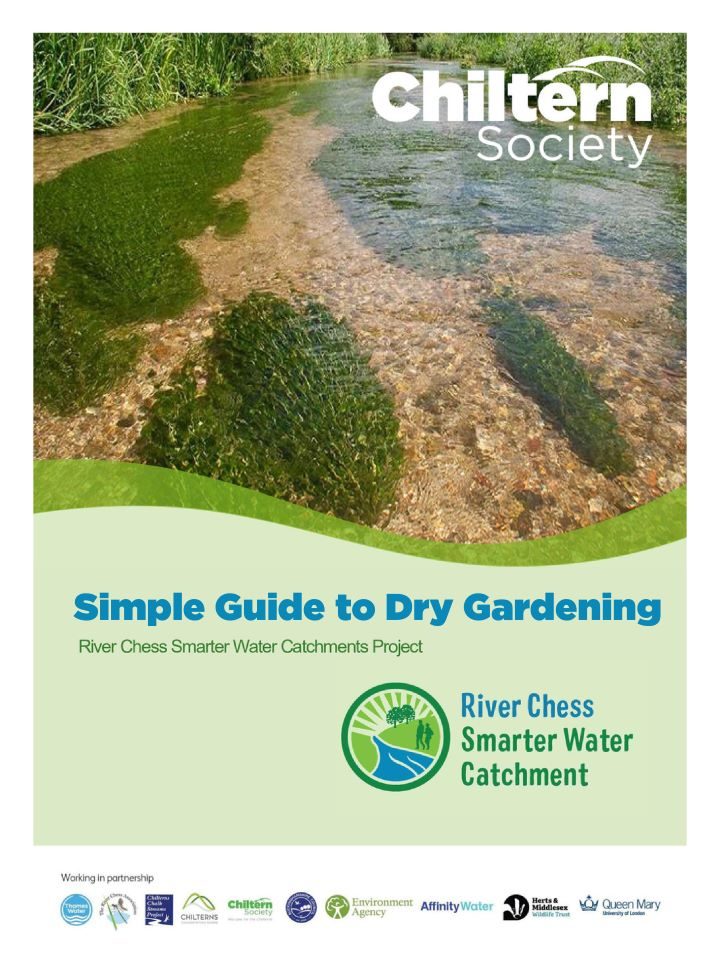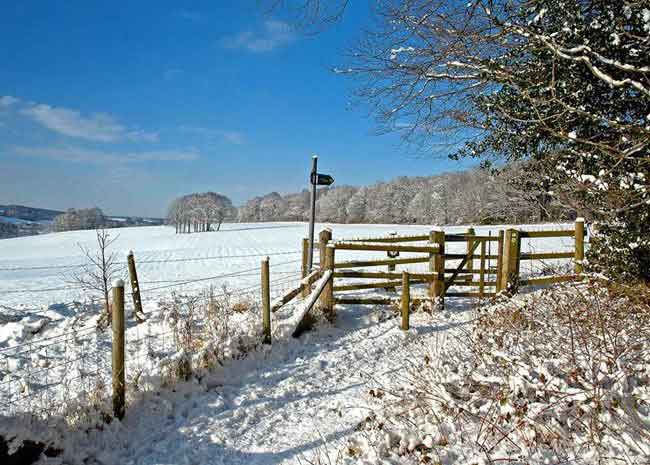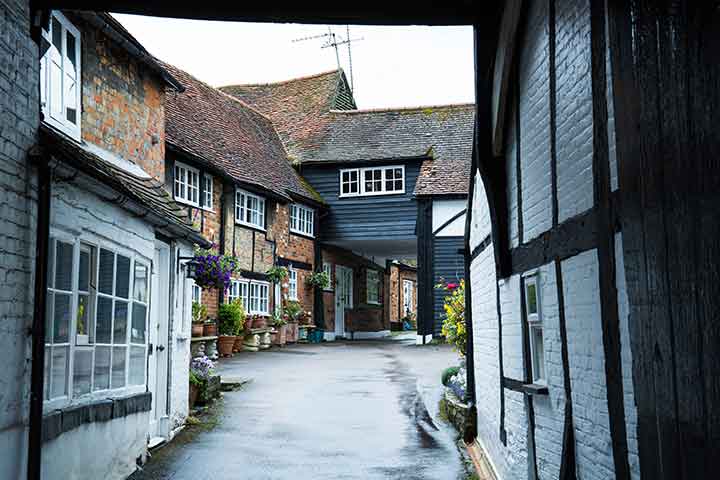The Chess Valley is part of the Chilterns Area of Outstanding Natural Beauty (AONB), a jewel in this already sparkling crown. The valley has a growing reputation as a destination for the public and educational institutions who are keen to experience the breath-taking scenery and study the varied geography and wildlife.
The River Chess is under pressure for a number of reasons. Flows have become less reliable in recent decades due to increasing groundwater abstraction and more variable and extreme rainfall. Also, water quality has been impacted by runoff and, notably, sewage effluent. Many of these key issues are already being addressed and through the ‘smarter water catchments’ initiative and this guide, we’re starting to identify how we can create a more resilient environment for future generations to enjoy.
Working with a group of partners, a team of highly motivated and talented individuals has come together to implement and improve the state of the River Chess catchment; something that will be achieved with the help of our stakeholders and our community.
Design it out: A few things to get you thinking
- Rainfall amount and frequency: it’s only getting more erratic
- Your soil type, depth and maximising organic content
- Protecting your garden from wind (drying)
- Reduce glare from paved areas
- Mulching to reduce evaporation
- Planting and designing the right lawn, enabling less mowing
- Avoid thirsty planting, poplar and willow are thirsty trees, root vegetable are better than beans and juicy things like tomatoes
- Group plants to create ground cover and avoid isolated specimen planting (evaporation)
- How you can harvest grey water (bath, showers, washing) as well as rain water
- If you have a pond, things like water lilies reduce pond evaporation, fountains don’t
- Can you terrace steep slopes, or plant things to hold water on them, it also helps with soil erosion, which is bad for our chalk streams and rivers too
- Plants not concrete, it helps reduce flood risk, hard surfaces create them
- Is it time to say goodbye to artificial grass, on so many levels
- Remember chalk streams are typically calcium and magnesium rich, which means the water is hard with a high pH. It is better left in these streams than extracted for uses such as watering our gardens, where rainwater will do the job just as well
- How about creating a wildflower meadow, it does lot’s for wildlife and doesn’t need watering, something you can even do in quite a small garden
- The cost of water, an hour with the hose pipe could cost you £2.50, and not help our chalk streams!
Saving Water
- Rain water is free (and carbon zero), plants like it better than tap (it’s about acidity and available nutrients). So using water butts is good for our chalk streams, your plants and the climate
- Use a watering can (2 makes the job even easier) so you only water what is needed. In turn it helps train your plants to drink more slowly and encourages plants to drink less
- Water when it’s cool, evening or morning, advice seems conflicted – in the morning there’s less demand for water elsewhere, so the pressure may be better?
- Recycling grey water, like that from your bath. You can use this to wash the car too, or at least use a bucket instead of a hose
- Recycle your paddling pool water
Improving Soil & Surfaces
Mulch & Composting
- Adding organic matter in early spring or late winter (5-10cm deep). Compost (manure, mushroom or garden compost, leaf mould) or mulch: bark, gravel, cocoa shells, or sheet mulches help the soil retain moisture for longer. Resulting in happier plants and less time spent watering
- You can also think about reducing kitchen and garden waste by composting at home
Surfaces & Soil Conditioning
- If you’re on clay consider adding grit as well as organic matter it should help prevent cracking in hot weather
- Water retaining granules in pots
- Avoid compacting soils, this creates run off and reduces moisture retention
- Consider swapping paving for plants or use permeable paving to let moisture through. Gravel is also light reflecting so helps save more water
- Planting in paving looks great, creeping plants like thyme work well, and help water flow
- Effective ground cover is better than bare soil as reduces evaporation
Choosing the right plant for the right place
Things to consider
- Going Native, look what is thriving in the wild locally
- Going Mediterranean or even a dessert garden for inspiration
- Plant in autumn to give plants a chance before the dry seasons
- Small young plants need less water than older larger ones
- Use the right lawn seed (fescues), and let your lawn grow longer at least 25mm in winter, and no lower than 13mm in summer (more when dry)
- Leathery skin, grey/silver or small leaved plants are normally draught resistant
- Plants with taproots like yucca normally survive longer dry spells
- Creeping or prostrate thyme is good for small dry lawns
- Google plants for a dry gardens, Beth Chatto and the RHS have some great suggestions
Good plants for dry places
- Lawns: don’t use a sprinkler. Unlike many other plants, grass can go dry, brown, and even crispy and will green up again as soon as it rains. Plant turf or grass seed in the autumn when rain is more likely
- Roses when established don’t need watering but they may flower less. Even newly planted roses need little water
- Herbs like lavender, rosemary and thyme, thrive in full sun and without much water, they’re great for the bees too!
- Wildflowers like poppies, cornflowers and sea holly can tolerate dry weather while adding a lovely splash of colour
- Most things silver-leaved or hairy plants are drought tolerant
- Alpines and succulents, Pelargoniums and other Mediterranean plants love drying out between watering’s
Ones that aren’t
- Juicy fruits and vegetables like tomatoes, strawberries, cucumbers, carrots, sweetcorn, peas and potatoes. Similarly sweet peas and squash are also thirsty
- Conifers don’t necessarily need much water but may not recover if they dry out
Making the best use of water
Some thoughts to get you started
- Use water retaining methods for pots (plastic/glazed etc): crystals, nonporous pots, water and use drip trays beneath pots to collect drainage
- Use drought resistant plants in pots
- Water pots at a cool time, use mulch, provide drainage
- Don’t over fill pots with soil, so there’s space for watering
- Water with rainwater and a water can, if you must irrigate, install a water efficient system (google for help)
- Don’t use a sprinkler, they are inefficient, untargeted. Potentially using 1,000l per hour
- Too much watering stifles root growth
- Look at other ways to save & recycle water, the future of our chalk streams depends upon it
You can download the guide HERE.
For more information about our Smarter Water Catchment Project click HERE.
Thank you





